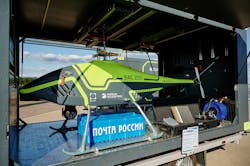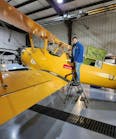BAS-200 Drone To Be Used for Geophysical Explorations in Arctic
The BAS-200, a helicopter-type unmanned aerial vehicle (UAV), is intended for mineral explorations employing airborne gravimetric and magnetic mapping, including that in the Arctic region, the aviation cluster of Rostec State Corporation informed.
“Russian Helicopters has streamlined this UAV for multi-purpose tasks. This drone will be used for exploration of oil and gas fields. Of course, we are excited to face new challenges in the Arctic. Nowadays, northern regions of the Russian Federation show a great interest in digital solutions,” reported Rostec’s aviation cluster.
Alexey Mamotko, head of marketing and sales of the Unmanned Helicopters Program Directorate at Mil and Kamov National Center for Helicopter Engineering, Russian Helicopters Holding (part of Rostec), said that, for UAVs to be used in the energy sector, the target load is a modern 31 kg airborne gravimeter.
As Mamotko revealed, Mill and Kamov Center had already coupled with Aerogeophysica JSC to integrate the advanced geophysical exploration device with unmanned aerial vehicle systems. “Currently, we have test flight agreements with a number of customers to conduct airborne gravimetric or magnetic surveys or monitor certain production facilities,” said Mamotko.
The BAS-200 produced by Russian Helicopters is a helicopter-type UAV managed by a remote pilot. It can reach speed up to 160 km/h and transport commercial load up to 50 kg; it can fly up to 4 hours. It can be used to monitor an area at days and nights; detect and track objects; and transmit videos in the visible or infrared ranges. The BAS-200 was first demonstrated at MAKS-2021 airshow.

